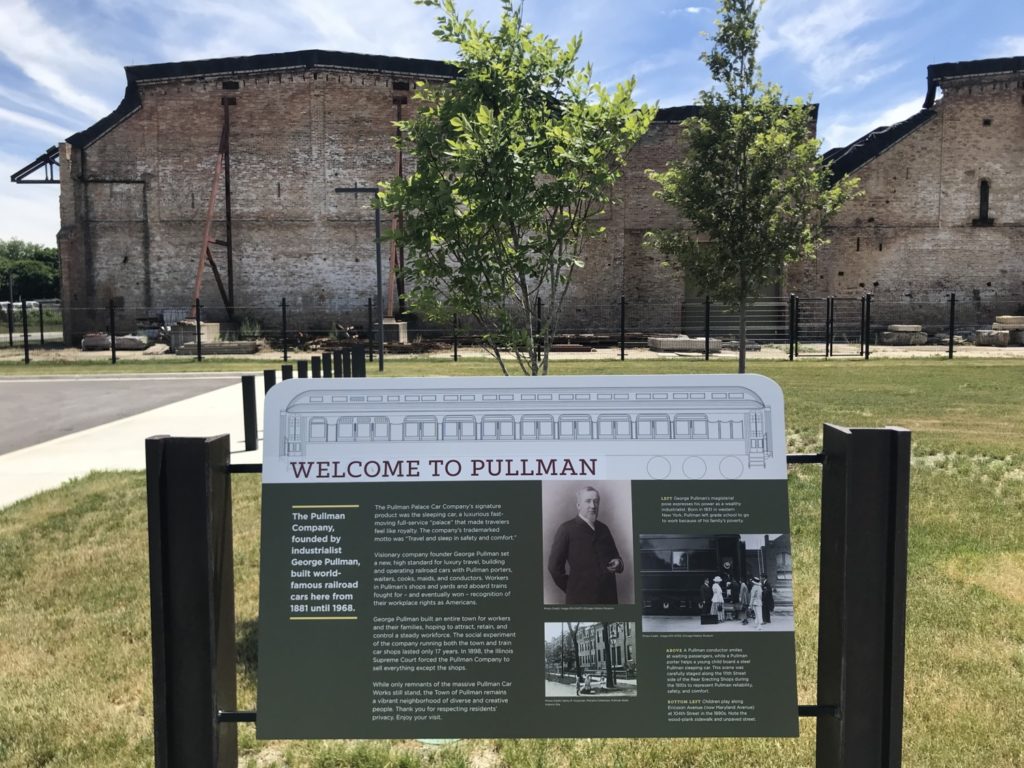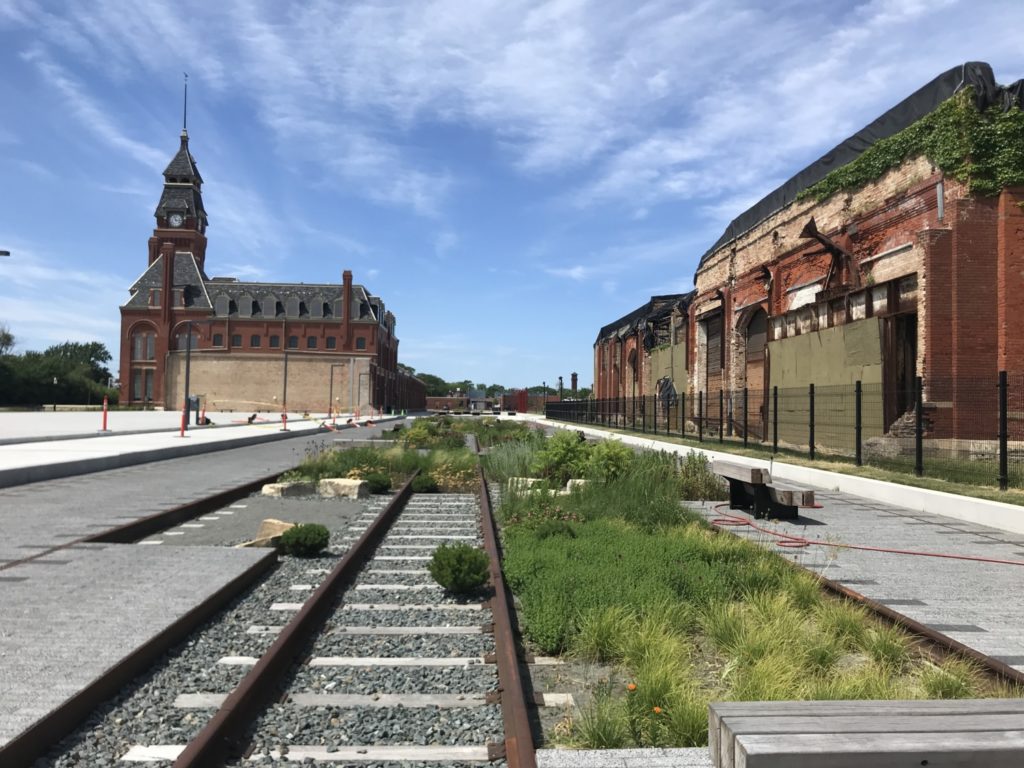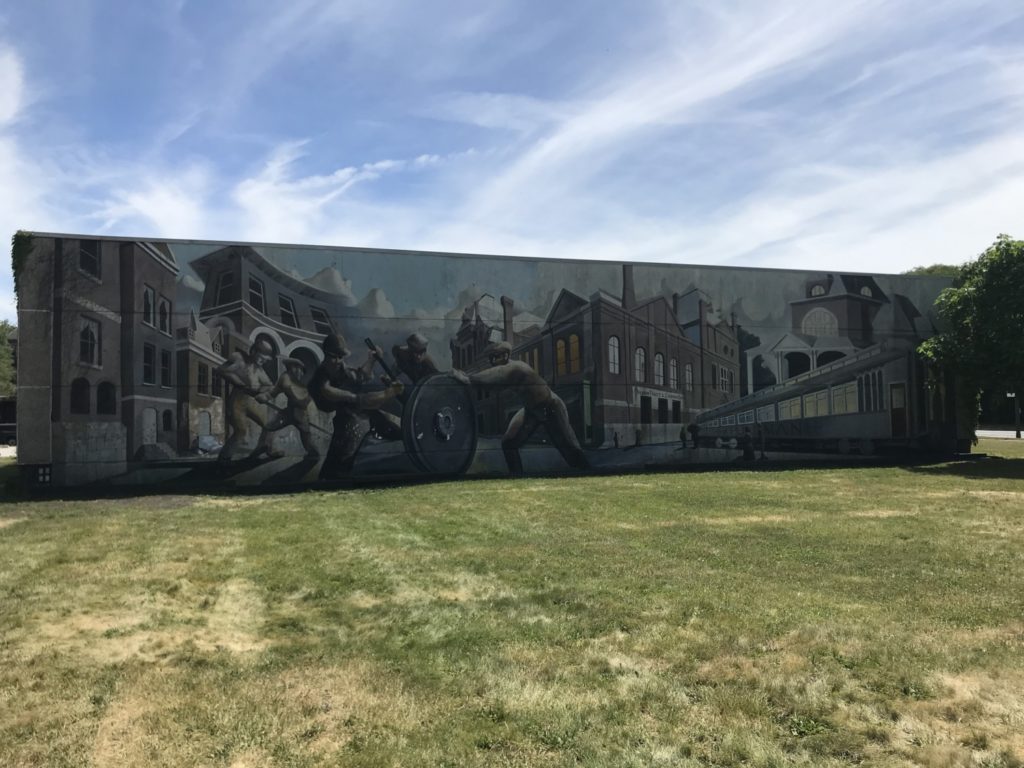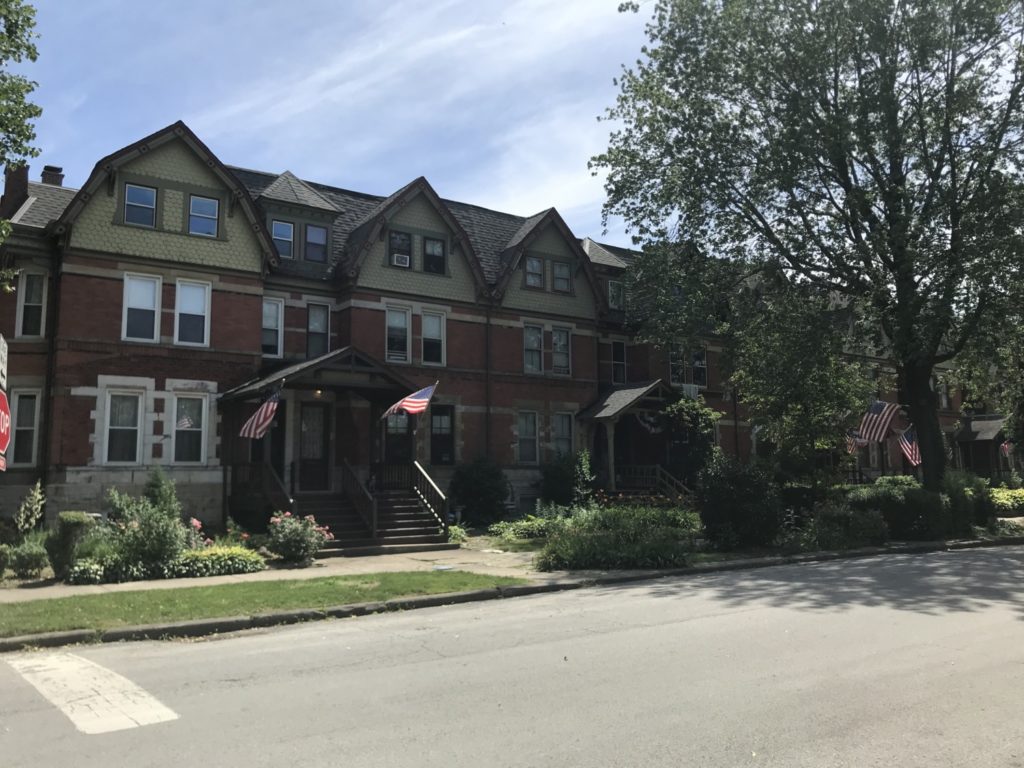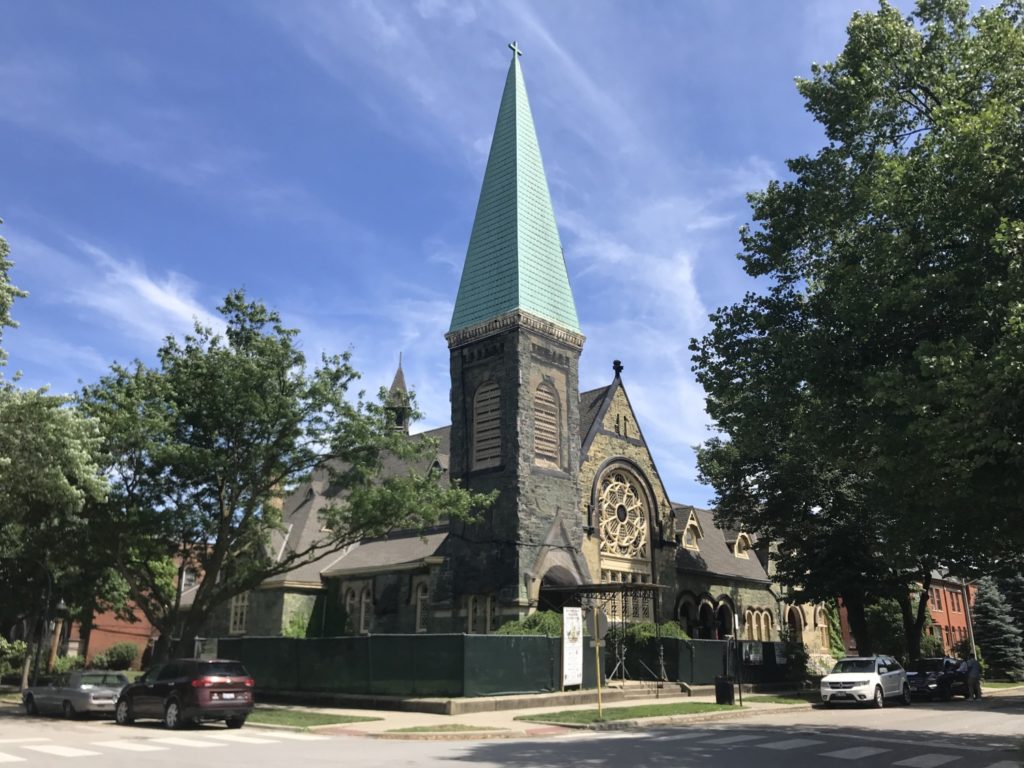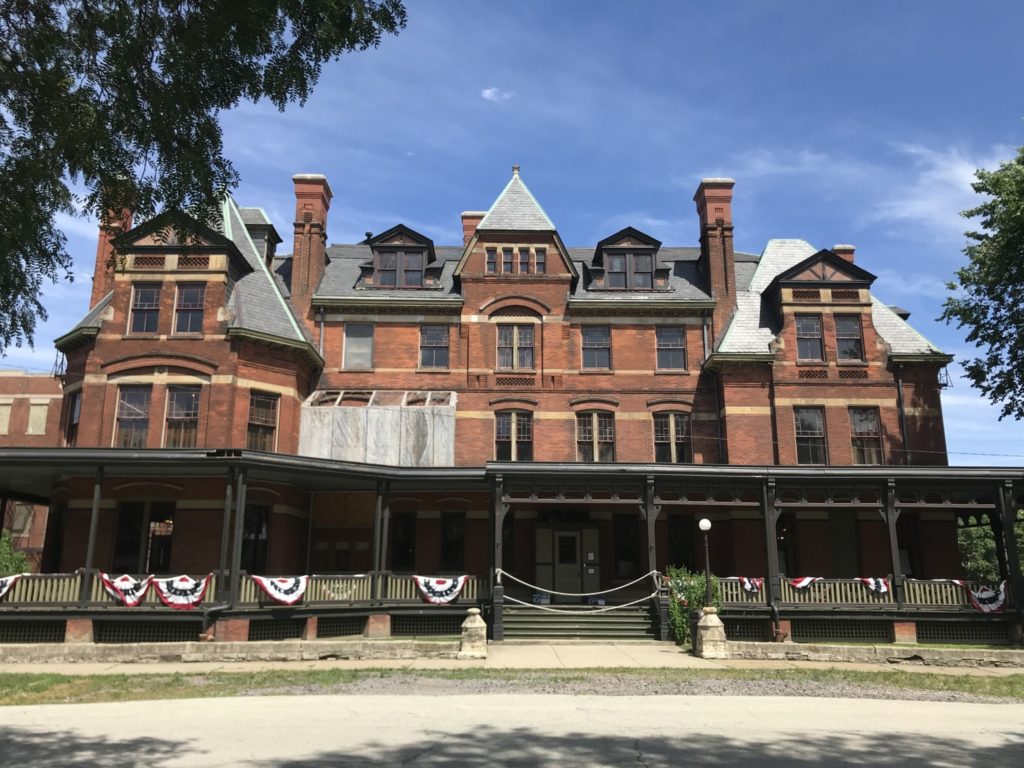Tom and I did a quick overnight trip to see Pullman National Monument in Chicago. Our main purpose on the trip was to visit one of the newest National Parks, Indiana Dunes, but Pullman is just a little further west on the south end of Chicago. Most of what I knew about Pullman before we went was the Pullman Porters, the black men who built the foundation of a black middle class in the years after slavery.
The Pullman National Monument tells the story of the Pullman Porters, but it spends a lot more time and space on George Mortimer Pullman, the founder of the company. George Pullman designed and manufactured the Pullman sleeping car. The Pullman car was hugely successful as the company provided the staff for each car and people paid extra to stay in one. George Pullman built the town of Pullman for the workers who manufactured the sleeping cars. It had brick row houses, stores, entertainment, and a church.
Due to an economic recession in 1894, George Pullman cut wages in half, but kept the rents for the company houses the same. Many workers could no longer afford to live in their homes. This led to a strike by all railroad workers as the workers asked for lower rent. President Grover Cleveland, in support of his industrialist friends, send in federal military troops who suppressed the strike and left 30 strikers dead. A national commission was appointed to investigate the strike, and the way it was handled. In 1898 the Supreme Court of Illinois ordered the Pullman Company to divest itself of the town.
Being a Pullman Porter was a way into the middle class for black Americans recently out of slavery. George Pullman became the largest employer of black men in the country because each of the Pullman sleeper cars had a black porter. The porters were paid on a per-mile basis, which led to long hours and a reliance on tips. But many black men saw being a Pullman Porter as a step up from working as a farm laborer. Pullman Porters also got to travel and became a way for blacks in the south to learn about the rest of the country. The Pullman Porters organized into a union in 1924, becoming the first national black union in United States history.
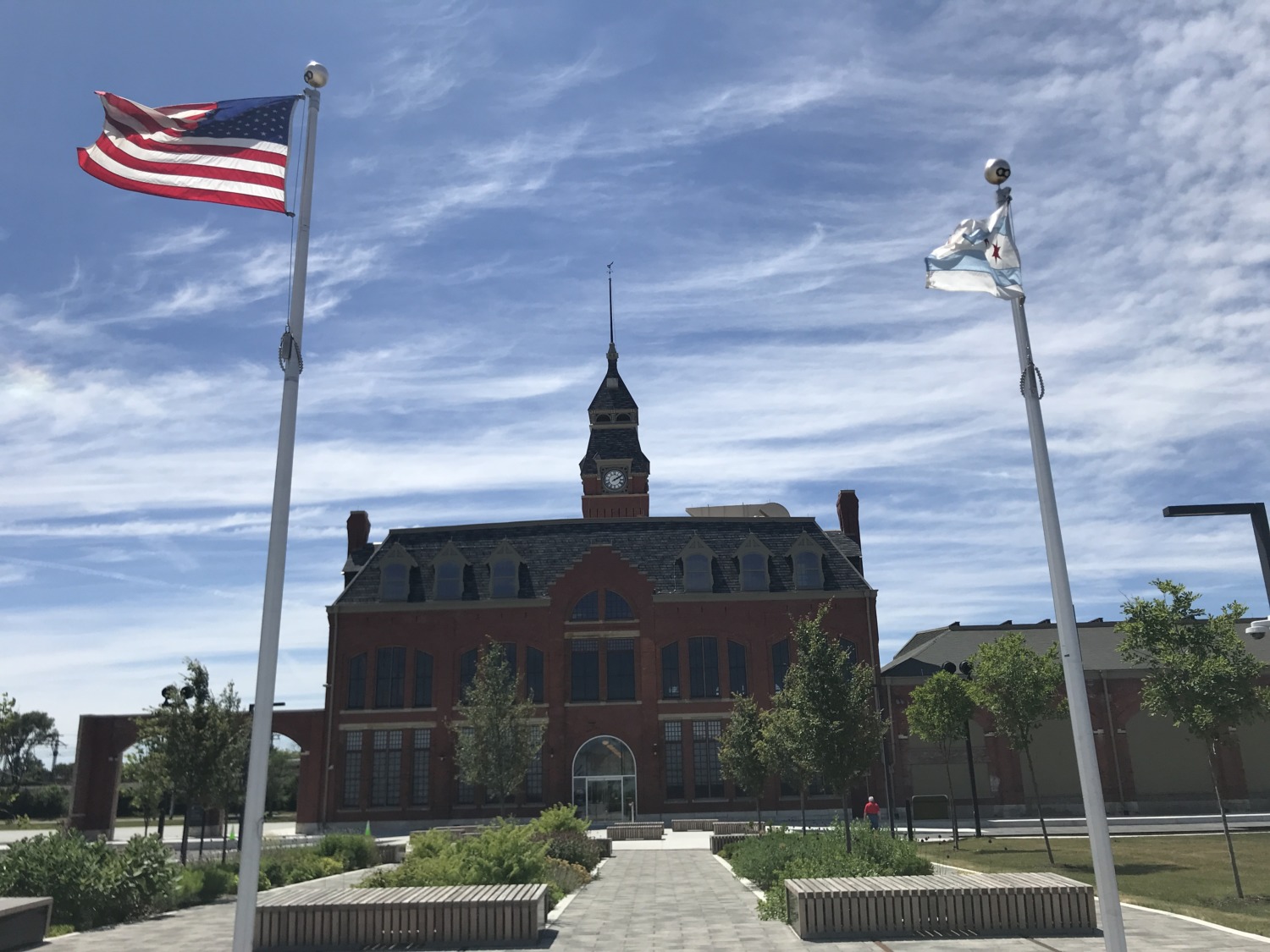
Today, many of the Pullman buildings remain standing. The only building that is part of the Pullman National Monument is the Administration building, which has been renovated as a Visitors Center and Museum. Tom and I spent about an hour going through the museum, and then stepped out into the neighborhood to explore further.
The Pullman neighborhood is a diverse blend of people, with most people owning the brick rowhouses where former Pullman workers lived. The row houses surround pocket parks that provide some green space on every block. The walls of one car shop, where the railroad cars were manufactured, are still standing. The interior was destroyed by fire, but the walls have been buttressed by the National Park Service. Hotel Florence, where industrialist visitors stayed while visiting, is being renovated. A Pullman mural covers the side of a building that stands where the arcade used to be. The Greenstone Church still holds worship services as a United Methodist congregation.
Tom and I did not walk down the street to the Pullman Porter Museum. I probably would have enjoyed it but it is not part of the Pullman National Monument. The Pullman Porter Museum is also closed for renovations. There is a map put out by the Historic Pullman foundation that provides a good walking tour with explanation of the buildings.
As always, Tom and I enjoyed our visit to the Pullman National Monument. We learned a bit of history and saw a part of Chicago that we had never seen before. And, of course, I got another stamp for my Passport book.


